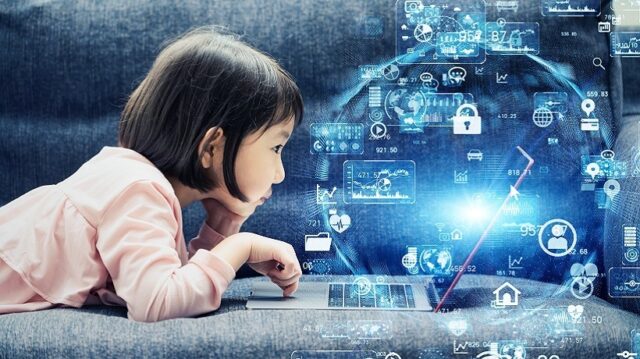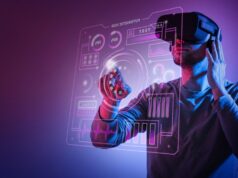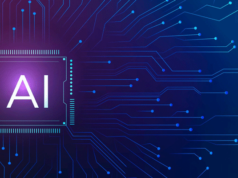The Role of Technology in Modern Education
Education has forever been a foundation of human advancement, a method through which information and abilities are passed down starting with one age then onto the next. Since the beginning of time, the techniques and devices for imparting information have advanced altogether, from conventional strategies like oral storytelling and written by hand compositions to printed books and formal classroom settings. Notwithstanding, in ongoing many years, technology has altered the education area in exceptional ways, ushering in a period of online and advanced learning. This change essentially changed the part of technology in modern education, with sweeping ramifications for the two understudies and teachers.
Technology in Modern Education features the imperative work that technology plays in shaping the educational scene today. The integration of technology has upset ordinary traditional educational guidelines and opened up extra doors for teaching and learning. In this article, we will investigate the various parts of technology’s work in modern education, including its impact on teaching strategy, and the by and large experience.
Enhancing Pedagogy:
Quite possibly the main way technology has changed education is by enhancing pedagogical methodologies. In person lectures and course books are as of now not the sole wellsprings of information for students. Technology has introduced interactive and engaging learning materials, media assets, and advanced instruments that take care of various learning styles.
Online software’s, Learning The Management Systems (LMS), and educational applications offer a great range of assets, for example, online classes, interactive simulations, and online tests. These instruments furnish students with chances to learn at their own speed, return to challenging points, and get quick input on their advancement. Additionally, technology has made it workable for teachers to customize learning encounters for students, tailoring content and appraisals to individual requirements.
Incorporating technology in modern education has similarly prompted blended learning models, which combine customary classroom instruction with online sessions. This approach grants instructors to utilize the upsides of both eye to eye and online teaching, fostering a more extraordinary and flexible learning environment.
Expanding Access to Education:
One more urgent part of the job of technology in modern education is its capacity to stretch out educational open doors to a more extensive crowd. Online education has separated geological obstructions and made learning available to individuals in remote and underserved regions. This democratization of education can possibly span educational inequalities and diminish the worldwide information hole
Online courses and projects presented by colleges and educational institutions have permitted working experts, guardians, and individuals with occupied timetables to seek after advanced education without the requirement for actual participation. This adaptability has enabled a different scope of students, from those seeking professional success to individuals pursuing individual interests.
Besides, Massive Open Online Courses (MOOCs) have worked on open education. These free or minimal expense courses cover many subjects and are available to anybody with an internet connection. MOOCs have made it functional for individuals to get information and limits from an area of the planet most esteemed institutions, consistently without the essential for formal certifications.
Moreover, Enormous Open Online Courses known as (MOOCs) have managed open education. These free or minimal-cost courses cover many subjects and are open to anybody with an internet connection. MOOCs have made it valuable for individuals to get information and endpoints from any part of the planet.
Additionally, open online courses have administered open education. These free or minimal-cost courses cover many subjects and are open to anybody with an internet. These online courses assisted students with removing all restrictions that they could confront.
The Role of Technology in Online Education:
Online education, a subset of modern education technology, has seen surprising improvement lately. The COVID-19 pandemic accelerated the gathering of online learning, forcing educational institutions in general to change quickly. The occupation of technology in online education ended up being more fundamental than any time in late memory, as it transformed into the fundamental technique for instruction for a millions of students.
Online education envelops various methodologies, including completely online courses, virtual classrooms, and mixture models. These techniques depend on different technologies, for example, video conferencing, online joint effort instruments, and computerized course materials. The upsides of online education include adaptability, openness, and the capacity to take special care of assorted learning styles.
For any circumstance, recognizing the difficulties and constraints of online education are basic. While technology empowers remote learning, it can in like way fuel the general division, as not all students have practically identical consent to gadgets and fast internet affiliations. Furthermore, two or three students could feel difficulty in eye to eye interactions and the discipline expected for independent online courses.
Technology as an Educational Equalizer:
Regardless of these difficulties, technology can possibly make everything fair in education. Innovations like open educational resources (OER) and free educational applications reduce the expense of learning materials, assistive tech, like screen readers and speech recognition tools, enable individuals with handicaps to take part in learning exercises on neutral ground with other students.
Besides, the job of technology in modern education stretches out to customized learning encounters. Computerized reasoning (artificial intelligence) and machine learning calculations can investigate student information to distinguish qualities and shortcomings, enabling teachers to tailor lectures accordingly. This individualized methodology can altogether further develop learning results and assist students with reaching their maximum capacity.
Preparing Students for the Digital Age:
The integration of technology in modern education isn’t just about changing how we educate yet in addition about preparing students for the computerized age. In the present society, computerized proficiency and technology abilities are fundamental for outcomes in many professions. Hence, educational institutions should outfit students with the information and skills important to flourish in an increasingly computerized world.
From coding and PC programming to information analysis and computerized correspondence, technology-centered courses and projects are preparing students for a great professional career. Students are users of technology as well as makers, as they foster the abilities expected to innovate and take care of mind boggling issues in different fields.
Incorporating technology in education isn’t restricted to undeniable level training or master training; it begins at the early levels. Schools are introducing coding classes to ensuring that students are introduced to technology since the beginning. This early exposure assists students with building strong foundation for a future education and career building.
Conclusion:
The control of technology in modern education is branched and extraordinary. It has changed educational procedures, relaxed agree to education, and worked with online learning. Essentially, technology might actually cross educational inequalities, make more re-took a stab at learning experiences, and plan students for the old age.
While the expected gains of technology in education are self-evident, it is significant to address the difficulties and confirmation that all understudies, paying little mind to what their experiences, can profit from the open doorways technology offers. Thusly, we can saddle the most outrageous restriction of technology in modern education and make a more inclusive, innovative, and productive educational framework that plans understudies for the possibilities of the 21st century.
Top of Form








